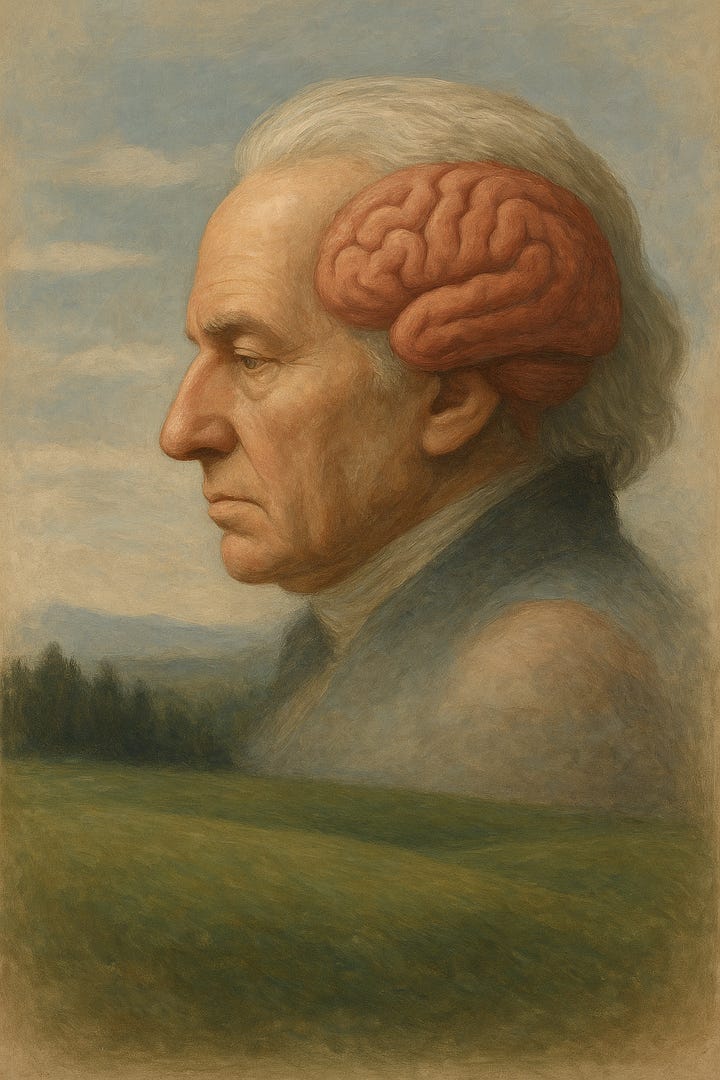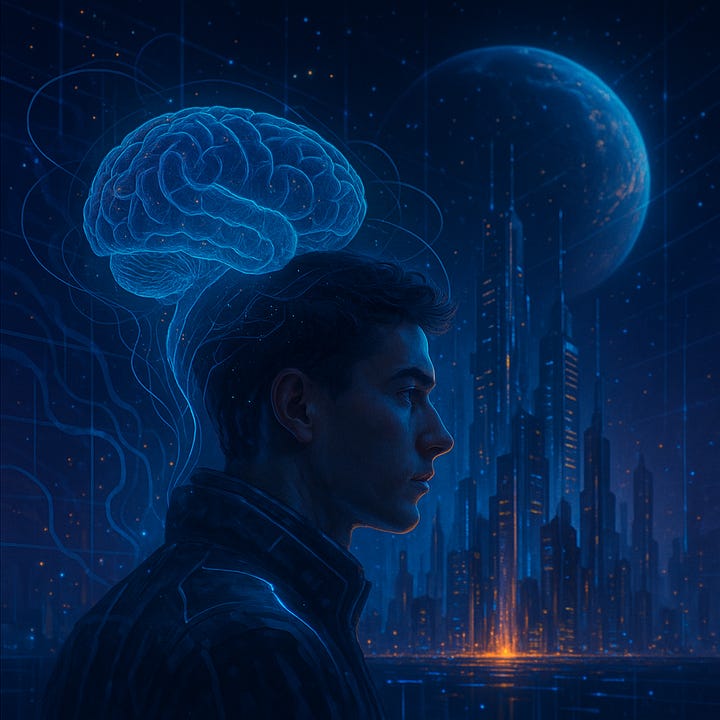What Is Reality? Kant, Consciousness, and the Mind That Makes the World
We live in an age where reality has become slippery.
We watch deepfakes talk with voices that never spoke, hear algorithms write music that never came from human hands, and ask ourselves: what’s real anymore?
But this question isn’t new. It’s just louder now.
Centuries before the first neural net whispered a pixelated truth, Immanuel Kant tried to tell us: we don’t see the world itself; we see what our minds allow us to see.
And now, in the 21st century, as neuroscience maps the folds of the brain and modern metaphysicians redraw the boundaries of matter and mind, the question is no longer whether the mind shapes reality, but how far down the rabbit hole that shaping goes.
Let’s take a walk with Kant. Then let’s talk about the brain. And then let’s meet the modern mystics who say the world is made of mind itself.
Kant didn’t say the world is fake.
He said the world you know, the world of colors and shapes, of time and space, is a version your mind builds. Not a hallucination, but a structure. A rendering.
He called it the phenomenal world, the version we experience.
But beneath that, behind the veil, lies something else. The noumenal world, the "thing-in-itself," something real and untouchable, something we never quite access directly.
You and I, he said in his Critique of Pure Reason (1787), are locked inside a perceptual framework. Our minds don’t receive reality. They organize it. Through space. Through time. Through cause and effect. Categories built in, not learned, but given.
So we’re not observers. We’re participants. Co-authors, in a way.
But the other author? That’s still a mystery.
Fast forward a couple centuries. Cognitive science tells us something eerily familiar: the brain doesn’t just absorb the world; it predicts it. Your senses don’t stream raw data like a webcam. Instead, your brain builds a best guess, constantly updated. A controlled hallucination, as Anil Seth put it in his 2017 Ted Talk.
Everything you see, feel, and touch, your entire waking experience, is your brain's evolving hypothesis of what’s out there. And consciousness? It’s what it feels like to be that model. We don’t live in the world directly. We live in a high-resolution simulation. A living map. A story the mind tells itself.
Sound familiar? It should. Kant would be nodding quietly in the back of the neuroscience conference.
Now for the leap. What if there is no “thing-in-itself” hiding behind the curtain?
What if mind is the curtain?
Enter Analytic Idealism, a modern, metaphysical return to a very old idea. Consciousness is not a product of matter. Matter is a product of consciousness.
In this view, there is no dead, unconscious world beneath our feet. There is no particle that isn’t, at its core, experiential. The universe isn’t a machine. It’s a dream. Or more precisely, it is a shared field of consciousness with billions of localized perspectives.
Your brain? Not a generator of consciousness, but a filter, a localization node, like a whirlpool in the ocean. Consciousness doesn’t come from it; it just funnels through.
So if Kant said we can’t know the thing-in-itself… analytic idealism says: we are the thing-in-itself. We are the knowing, dreaming, modeling part of a conscious universe looking back at itself.
So, what do we do with this? Let’s lay it out in simpler terms, but without losing the depth. For Kant, what’s real is a world that exists beyond our direct knowing, something out there that we can never fully access. The mind’s role is to shape how that world appears to us, using built-in categories like space, time, and causality. We don’t see the world as it is; we see it as our minds structure it.
Cognitive science, on the other hand, tells us that what we perceive as reality is a dynamic, predictive model generated by the brain. The mind doesn’t just filter the world; it constructs it. It simulates experience based on what it expects, constantly updating that simulation with new input. Here, the mind is less a window and more a storyteller, writing and rewriting the world as we move through it.
Analytic idealism goes further still. It claims that consciousness isn’t shaped by the world. It is the world. Reality doesn’t exist outside of mind; it emerges within it. The physical world is a kind of interface, what consciousness looks like from the outside when it reflects itself.
Each perspective offers a different angle on the same core mystery. That the line between the world and the self may be far thinner than we think. You don’t just observe reality. You generate it. You host it. And perhaps, in the deepest sense, you are it.
This isn’t JUST academic. In a world of AI-generated everything, of truth crumbling under digital pressure, we have to ask: If the world is a model, who’s building it? If consciousness is fundamental, what are we really part of? And if perception is shaped, filtered, or dreamed, how do we anchor ourselves to something true?
Maybe the answer isn’t in choosing which theory is “right.” Maybe the answer is in remembering that the mind matters, not just neurologically, but cosmically.
The most advanced technologies today don’t just reshape reality. They reshape the lens through which we see it. And so, the work of being human, really human, isn’t to reject the simulation.
It’s to wake up inside it.
To become aware of the architecture.
To see the code… and still choose meaning.








